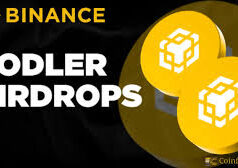Crypto airdrops were once the golden ticket of the blockchain world, promising free tokens and instant wealth for early adopters. From Uniswap’s 2020 airdrop, which netted users thousands of dollars in UNI tokens, to Arbitrum’s 2022 giveaway, airdrops fueled excitement and drove adoption. Yet, in 2024, the shine has faded. A staggering 88% of airdropped tokens plummeted in value within 15 days, leaving investors holding bags of worthless assets. Why do airdrops keep flopping, and can upcoming projects like Soneium, Ink, and Sunrise Layer buck the trend? Let’s dive into the reasons for these failures, analyze technical and sentiment factors, and assess the potential for these new players.
Why Airdrops Are Failing
The data paints a grim picture. A 2024 study by Keyrock analyzed 62 airdrops across six blockchains, finding that most tokens crashed shortly after launch, with only a handful achieving positive returns after three months. Several factors explain this trend:
- High Fully Diluted Valuation (FDV): Tokens launched with inflated FDVs—representing the total value of all possible tokens—struggle to maintain momentum. High FDVs create a perception of limited upside, discouraging long-term holding. Keyrock’s analysis showed tokens with lower FDVs, like Drift’s $56 million launch, outperformed high-FDV projects like ZkLend, which tanked 95% due to overhyped valuations and weak traction.
- Sell-Off Pressure and Airdrop Farming: Many recipients, including “airdrop farmers” using multiple wallets to game the system, sell tokens immediately for quick profits. This oversupply floods the market, crashing prices. For example, SocialX’s airdrop failed as its platform couldn’t sustain engagement, leading to dumps. Sybil attacks, where bad actors exploit eligibility criteria, further exacerbate sell-offs.
- Poor Project Fundamentals: Airdrops often mask weak projects. Vague eligibility criteria, as seen with Scroll, or insider-heavy allocations, like Kaito’s 43.3% to insiders versus 10% for the community, erode trust. Projects like EigenLayer stumbled with complex criteria that confused users, undermining participation. Without strong utility or community engagement, tokens lack staying power.
- Oversaturation and Scams: The market is flooded with airdrops—over 600 in 2024 alone—diluting their novelty. Scams, from phishing to fake token drops, have also eroded trust, making users wary. Binance Research highlighted “insider profits” and “bot exploitation” as key flaws.
- Lack of Liquidity: High-FDV tokens often lack the liquidity to absorb sell pressure, leading to price collapses. Keyrock noted that without sufficient liquidity, prices become hypersensitive to dumps.
Technical Analysis: What Makes a Successful Airdrop?
From a technical perspective, successful airdrops hinge on balanced tokenomics and market conditions. Projects like Drift, which allocated 12% of its token supply and launched with a modest $56 million FDV, saw a 2.9x price increase post-launch. The key was fair distribution rewarding loyal users, reducing Sybil farming, and ensuring liquidity. Conversely, ZkLend’s high FDV and lack of brand traction led to a 95% drop.
For upcoming airdrops, technical indicators like Relative Strength Index (RSI) and trading volume post-launch will be critical. A balanced RSI (30-70) signals healthy momentum, while high volume indicates liquidity to absorb sell pressure. Projects must also maintain low circulating supply initially to avoid oversupply, gradually releasing tokens to sustain price stability.
Public Sentiment: A Mixed Bag
Sentiment on platforms like X reflects frustration with airdrop failures. Users like @BadSaf247 lament “toxic” airdrops with insider dumps, while others criticize vague criteria and bot exploitation. However, excitement persists for projects with strong fundamentals. Solana-based airdrops, like WEN and JUP, have garnered positive sentiment for their fair distributions and ecosystem strength. Community trust is pivotal—projects that reward genuine engagement over speculative farming retain loyalty.
Future Airdrops: Soneium, Ink, and Sunrise Layer
Can Soneium, Ink, and Sunrise Layer defy the odds? Let’s assess their potential.
Soneium
Soneium, a Sony-backed Ethereum Layer 2 built on Optimism’s OP Stack, launched its mainnet in January 2024. Its focus on creator-friendly dApps, like the Fan Marketing Platform, and partnerships with Chainlink and Aave signal strong fundamentals. The Soneium OG Badge program, rewarding 426,994 early adopters, and Galxe campaign quests foster engagement.
Technical Outlook: Soneium’s low-cost, scalable infrastructure could support high transaction volumes, ensuring liquidity. A modest FDV and phased token release could stabilize prices post-airdrop.
Sentiment: X posts show enthusiasm for Soneium’s Sony backing and Web3 vision, though some worry about corporate control. Its community-led badge initiative boosts trust.
Success Potential: High, if it maintains fair distribution and leverages Sony’s brand.
Ink
Ink, a Solana-based NFT platform, aims to reward creators and collectors. While no airdrop is confirmed, its integration with Solana’s high-throughput ecosystem and focus on NFTs align with successful airdrops like Pengu.
Technical Outlook: Solana’s low fees and fast transactions support Ink’s scalability. A clear tokenomics model with limited initial supply could prevent dumps.
Sentiment: Solana airdrops enjoy strong community support, but Ink lacks specific buzz on X, suggesting it needs more visibility.
Success Potential: Moderate, contingent on transparent criteria and community engagement.
Sunrise Layer
Sunrise, a Data Availability Layer for rollups, runs an incentivized testnet rewarding active users with RISE tokens. Its Proof of Liquidity model and Cosmos-EVM integration are innovative but complex.
Technical Outlook: Sunrise’s testnet activity suggests robust infrastructure, but dual-wallet requirements may deter casual users. A low FDV and controlled token release are critical.Sentiment: X users are cautiously optimistic, citing its technical innovation but noting complexity as a barrier.
Success Potential: Moderate to high, if it simplifies participation and ensures liquidity.
The Path Forward
Airdrops are flopping due to high FDVs, sell-off pressure, weak fundamentals, and oversaturation. Successful airdrops, like Drift, prioritize fair distribution, modest valuations, and community trust. Soneium’s strong backing and clear incentives position it well, while Ink and Sunrise Layer need to refine their approaches to avoid pitfalls. For investors, the lesson is clear: focus on projects with solid tokenomics, transparent criteria, and genuine utility. As the crypto market matures, airdrops must evolve beyond free money to foster lasting communities—or risk fading into obscurity.




























Indeed. Nothing good lasts forever